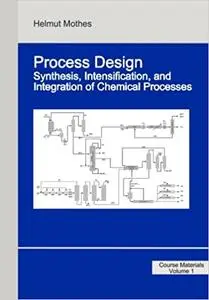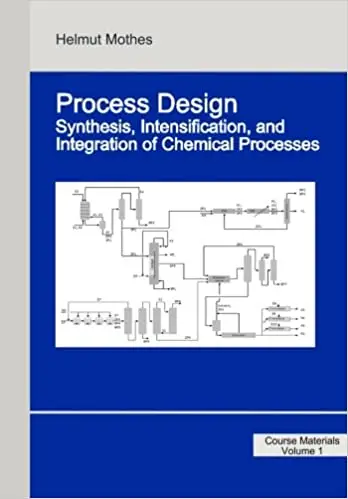Helmut Mothes, "Process Design: Synthesis, Intensification, and Integration of Chemical Processes"
English | ISBN: 300049149X | 2015 | 188 pages | EPUB | 4 MB
English | ISBN: 300049149X | 2015 | 188 pages | EPUB | 4 MB
This book promotes process design strategies and methods to chemical engineering students and encourages experienced engineers to reflect on – and perhaps challenge – their daily approach to process design.The production facilities and supply chains of the chemical industry represent complex, global systems built on sophisticated technological processes. While process design of the past could rely on steadily growing economies creating a predictable framework of product demand, raw material availability, and technological progress, today global competition, shorter product cycles, unreliable raw material supplies, and emerging, disruptive technologies create new challenges to the design of efficient, flexible, and sustainable processes. A holistic design methodology has to take care of these challenges.Process design can build on many excellent chemical engineering textbooks focusing on unit operations, process intensification, or process integration. Only a few books address the creative step finding an initial process structure. Process design mehodologies constitute the main topic of this book. A special focus is given to the search for an optimal process structure (process synthesis), since an inferior process structure cannot be "upgraded" into an optimal process during later extensive optimization of process parameters regardless of the effort. The design methodology illustrated in the textbook first outlines alternate strategies to find an initial process structure (hierarchical approach or superstructure concepts with heuristic rules or mixed integer non-linear programming). The role of design targets to guide a process designer is shown for energy integration and capital investment.In a next design step, process intensification and integration are used to improve the initial process structure with respect to unit operation efficiencies (heating, cooling, and mixing) and process synergies (heat-power integration, reaction distillation, dividing wall column, etc.) resulting in superior processes. The last step of the process design methodology introduces the concept of “no-regret”- solutions. These "no-regret"-solutions aim at process designs offering a robust performance in different, future scenarios (fluctuating or unexpected product demand). Modular designs offer a powerful tool to esatablish highly flexible, chemical processes.The design methodology is demonstrated in a comprehensive design case dealing with 6 chemical processes integrated into a production site. The design procedure to derive process and plant structures is illustrated in a step by step approach.To a large extend, this book on process design builds on experiences of the author at Bayer Technology Services. The book includes the input of many Bayer people – technical contributions, exciting suggestions, and enlightening discussions. The book summarizes courses on “Process Intensification” and “Process Design” given by the author at the Technical University Dresden (TU Dresden - 2008), East China University of Science and Technology (ECUST Shanghai – 2012-2014) and Ruhr University Bochum (RUB – 2014-2015).



